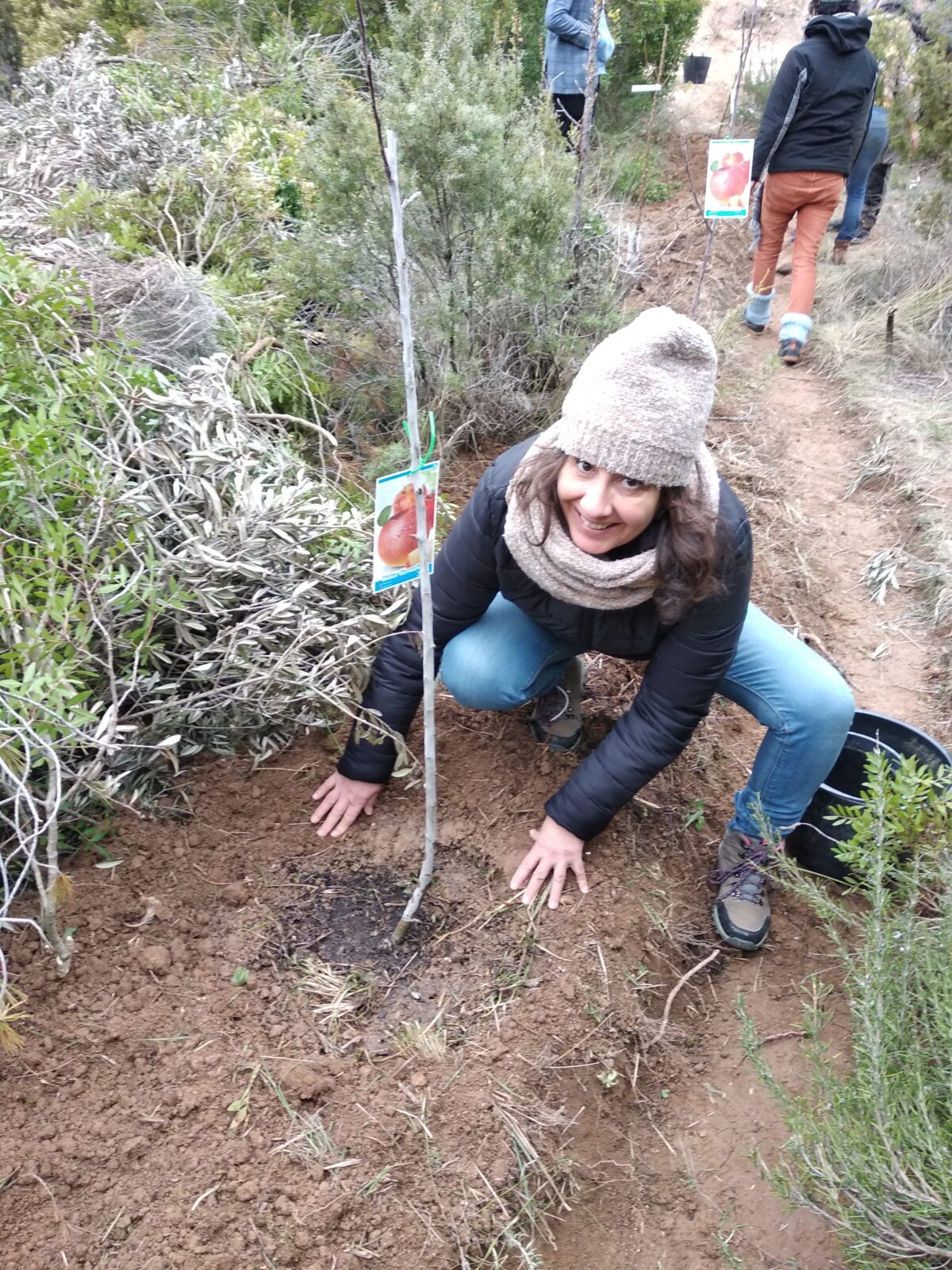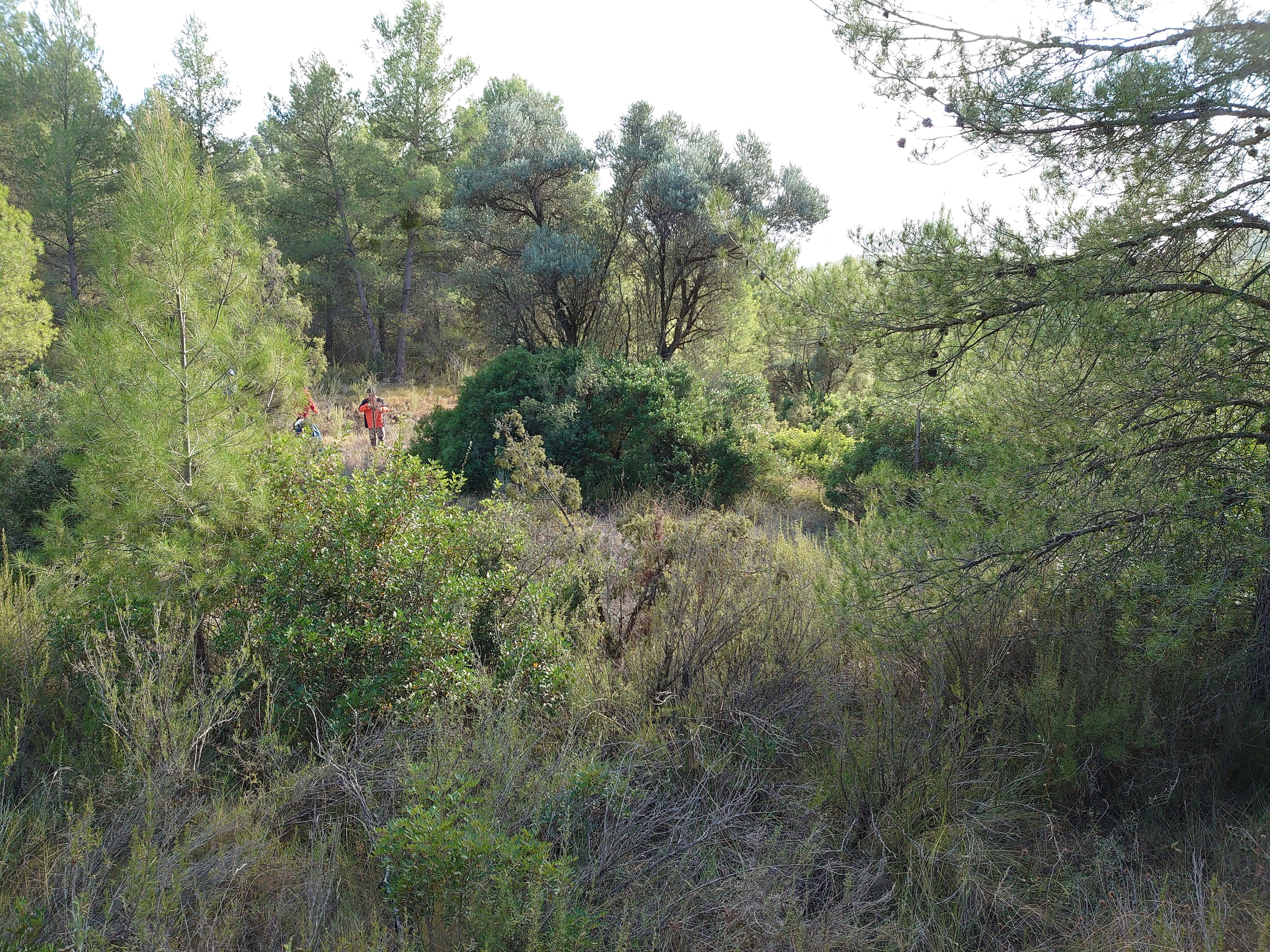This morning I woke up wondering how I can inspire our Rovira Regenerativa team, (and anyone else who is interested!) to engage deeply with the work we are going to do on the 20th February in the Vall Rovira. Last week I wrote that the “Why?” is absolutely key to learning and motivated work, and I realised yesterday that I want to share the best story I can about why we doing the following work on an abandoned terrace near Boodaville in two weeks time:
- Pruning the olive tree
- planting support species and fruit trees (apples, pomegranates and figs)
- making Gin infused with rosemary
- Grafting pistachio on to the lentiscus tree
(You can see the terrace with the olive and lentiscus tree in the photo)
ECOSYSTEM HEALTH
These are the exact words we are using to define one objective of our project. We discussed yesterday, that in order to frame Ecosocial projects like this to fit with our current capitalist mindset and therefore secure funding, we can also label Ecosystem Health as a “return” on any investment in the project. So the overall “Why?” of the project is Ecosystem Health.
how does this implementation on the abandoned terrace lead to a healthy ecosystem?
As Mia, one of our team members rightly pointed out, the very best thing for the natural ecosystem would be to leave this terrace alone. To do nothing and let nature have space to regenerate. Complete “rewilding”.
But we live on this planet with nearly 9 billion human beings and people need to eat. Our current agriculture practices are degrading ecosystems on a massive scale, they are hugely wasteful and involve transporting goods large distances.
We seem very far away from it here in the Vall Rovira, but in the small shop in Caseres I have found apples from New Zealand for sale. This little village relies on MercaZaragoza, a huge international hub, for provisions for the shop.
With the design we are implementing here we are working with nature, to maintain and even regenerate the soil, and to improve water retention right here on the terrace in the photo. At the same time we are countering some of the damage done by most farming.
inspiration
By sharing the space and the project, by involving the local community, we encourage a change in consumption habits, offer hope, and ignite the imagination so people can replicate and develop these ideas.
Action
The terrace in the photo has been abandoned for over twenty years. Here is the thinking behind our planned work :
- We will work with nature and use the healthy elements already present in the ecosystem – soil filled with roots, organic matter and life which is in a decompacted state compared to machine farmed terraces.
- We will add support species to fix nitrogen, attract beneficial insects, increase biodiversity, and grow deep roots
- Pruning the olive : In order to produce a yield we need accessible healthy branches only.
- Grafting lentiscus : This tree could have a value as lentiscus (apparently it’s very expensive and used for funerals in the Netherlands) but a pistachio harvest would be appreciated by locals. (Apparently this grafting is possible but none of us have ever seen it working so we are going to try)
- Support species and fruit trees : In between the life that already exists on the terrace we are going to add more nitrogen fixers and climate appropriate fruit trees to harvest.
- Making Gin with rosemary : Juniper and Rosemary are abundant on this terrace and we are following up some ideas and suggestions with action to see how the abundance nature offers us in the Vall Rovira can be used to make products with a high value.
balance
A large part of what we are doing is Regenerative Agriculture, rather than complete rewilding.
The beauty of the design is that even the agricultural land will be improving the health of the valley ecosystem while at the same time providing food for humans and wildlife, and opportunities for producing products with a high value.
We recognise, however, that at the valley scale the design has to be a balance between completely natural spaces and agricultural land we we are continuing to explore what proportion of the abandoned terraces we will bring back to agriculture. This first experiment is a pilot to see how we can make the most of the natural succession that has already occurred and make a quick transition to food production.
Please feel free to add comments and suggestions below!









